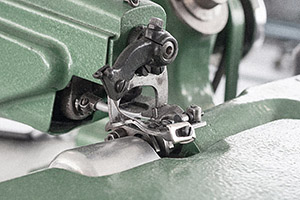Work trousers in cotton duck in black
Prices exclude VAT, shipping is free, and orders leave the workshop within three working days.
Shop
£200.00 — ex VAT
Trousers, wide of leg, made in London with sturdy (14oz) cotton canvas from Lancashire, horn buttons from the Cotswolds, and a sand-cast brass buckle from the West Midlands.
Sizing
If in doubt, ignore what your current trousers say they are, and measure them instead. Lay them out flat and straight, measure from one side of the waistband to the other, right along the top edge, then double. That's your size (not to be confused with your physical waist size).
| XS | S | M | L | XL | |
|---|---|---|---|---|---|
| Waist | 30 | 32 | 34 | 36 | 38 |
| Waist cinched | 28 | 30 | 32 | 34 | 36 |
| Front rise | 11 | 11½ | 12 | 12½ | 13 |
| Back rise | 15¼ | 15¾ | 16¼ | 16¾ | 17¼ |
| Thigh | 12 | 12¼ | 12½ | 12¾ | 13 |
| Knee | 8¾ | 9 | 9¼ | 9½ | 9¾ |
| Hem | 7 | 7¼ | 7½ | 7¾ | 8 |
| Inside leg | 32 | 32 | 32 | 32 | 32 |
| Inside leg unhemmed | 33½ | 33½ | 33½ | 33½ | 33½ |

As worn
Makers of
So they say
The cords are unbelievable; I cannot speak highly enough.
I had my tailor hem my slim corduroy trousers, and she was quite astonished by both the material and the quality of construction. I've used her services for years, and such comments are not common at all, so hats off to you guys.
The cord trousers arrived today, and are just perfect. How do you keep on finding these amazing fabrics, I wonder?
The umber corduroy slim trousers have been received, the household has awed over the material, and the local tailor will be employed tomorrow to put an extra hole in the cinch and up the hem an inch. Good job, S.E.H Kelly, good job.
The corduroy trousers arrived today and they are great! They fit as described and the fabric is incredibly soft and comfortable. Thanks again; I'll be wearing these a lot — and I am already debating what my next purchase will be.

























